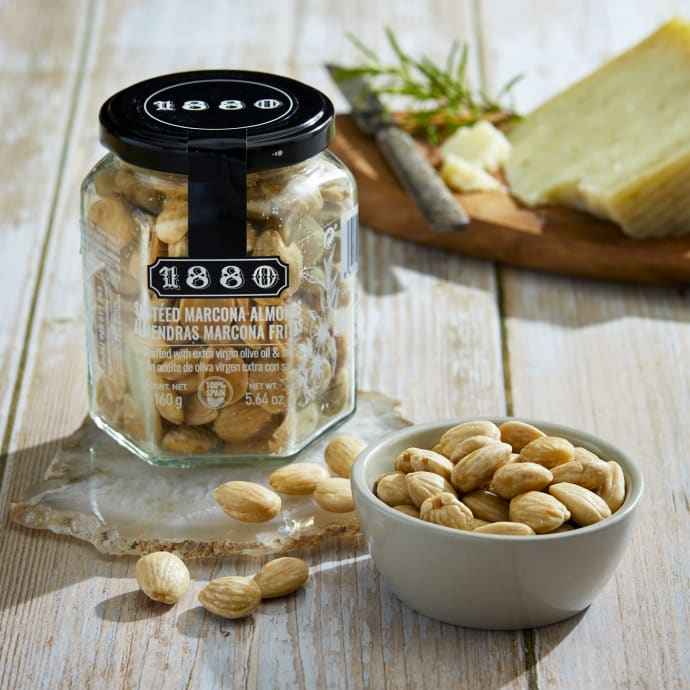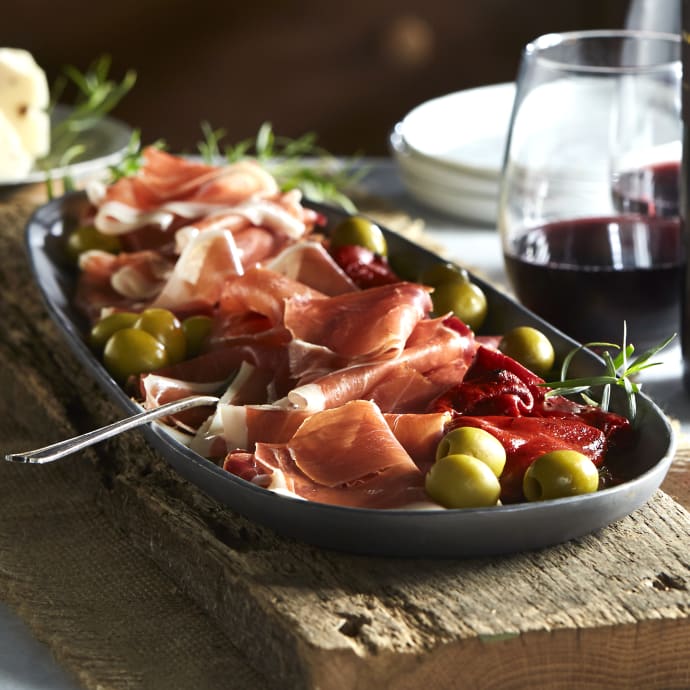Spanish Variety is Rounder, More Luscious Than California Types
By Rick Nichols
Michele Buster found it curious that although she had never been a particular fan of California almonds, in Spain she was instantly drawn to a blond, lightly fried almond called the marcona.
It was rounder and not as pointy. It was softer and chewier, closer to the juicy bite of a pine nut. And it had a lush, sensual flavor, given wing by a naturally higher oil content and finishing slick of olive oil (sunflower oil is used for exports) and sea salt.
You may have encountered this irresistible almond yourself. In less than two years, in large part because of Buster's efforts, it has climbed the pop charts, playing phenomenally well (even though the price -- close to $10 a pound -- is double that of ordinary almonds) in upscale venues: specialty stores, cheese shops and gourmet counters.
It is difficult, having sampled a marcona almond, to walk away. I buy small bags now, conscious that I'll dig through an entire half-pound tub if one's on the table.
The Peanut Shop of Williamsburg, Va., liked them so much it bought them by the ton, tinned them and added them to its national line. (Don Harris of Tienda, the distributor who arranged the deal, told me the marconas had also been a boon to his own Spanish products mail-order business -- www.tienda.com.)
Buster was a college student in 1984 when she went off to Valencia and encountered the marcona almond. Years later, she went into the cheese business in New York and started importing Spanish cheeses, olive oils and fig cakes.
In 2001, she added the marcona almonds to the product line, starting with 20 11-pound cases, then jumping to 240, then 500, and now thousands.
The marcona is just one of several Spanish almond varieties, the sweet, longer largueta being another. Its white blossoms fill the Spanish spring, most vividly in the country's southeastern reaches from Valencia south toward Málaga, where the finest of Spain's chalky turrones -- the marcona almond-dappled nougats of honey and egg whites -- are made each fall.
Tapas bars sometimes serve them with dried tuna. But more commonly they're paired with grilled pecorino, honey and pears; sheep's-milk manchego cheese and a lemony quince paste called membrillo; or sweet clementines.
Not until the September harvest is past and the turrón makers have taken their share are the marconas available for the export market.
Their sudden popularity has caused frustrations. Traditionally, they have been lightly fried -- they're too fragile to roast -- in 75-pound batches. Scaling up the artisanal process has left shipments (including the Mitica brand that Buster wholesales) swimming in too much oil, others too dry, others "bald" from premature salt loss.
Nature hasn't helped. Europe's searingly hot summer last year ruined 40 percent of the almond crop, frying it on the trees.





